White-rumped Sandpiper Calidris fuscicollis
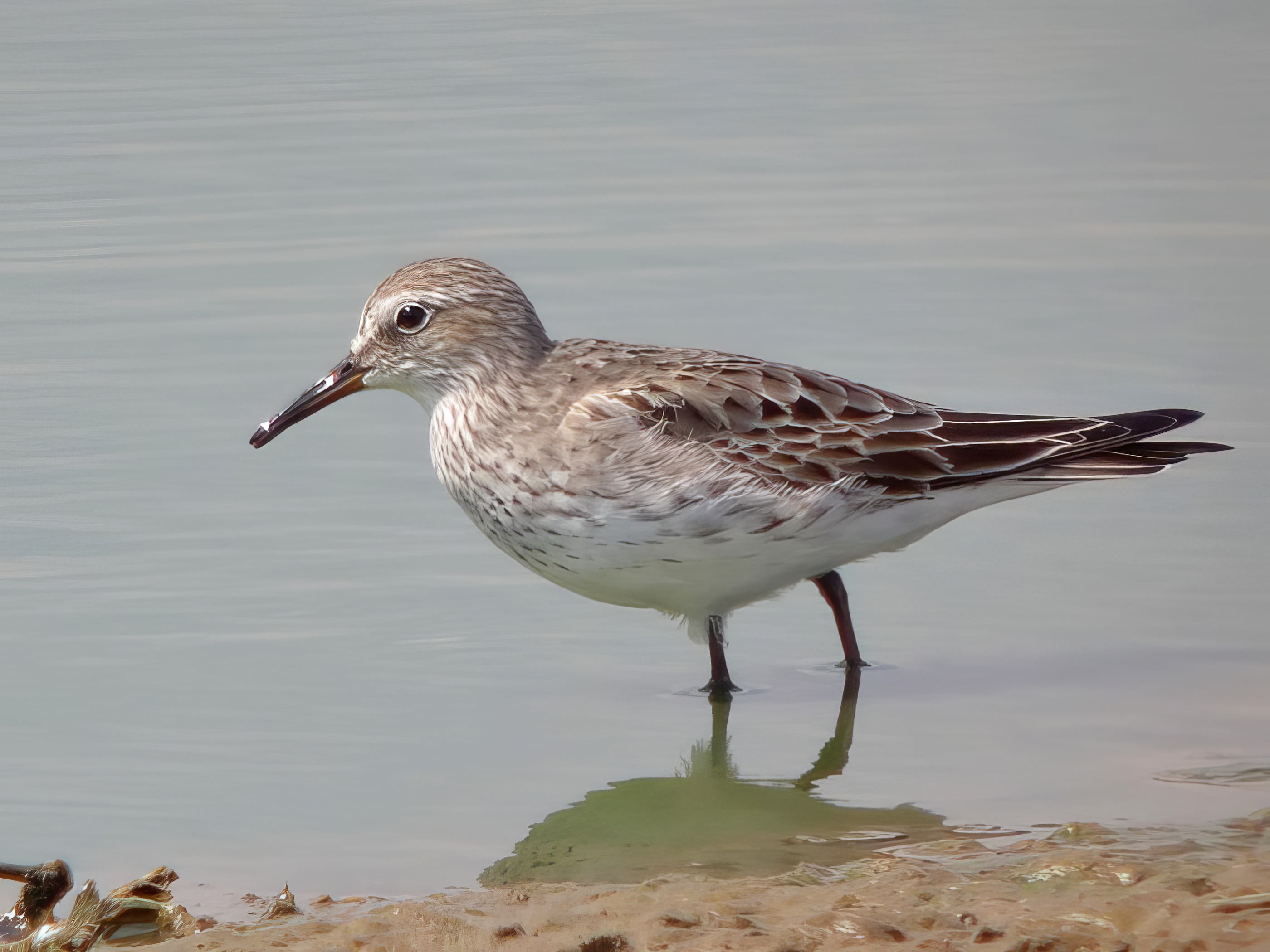
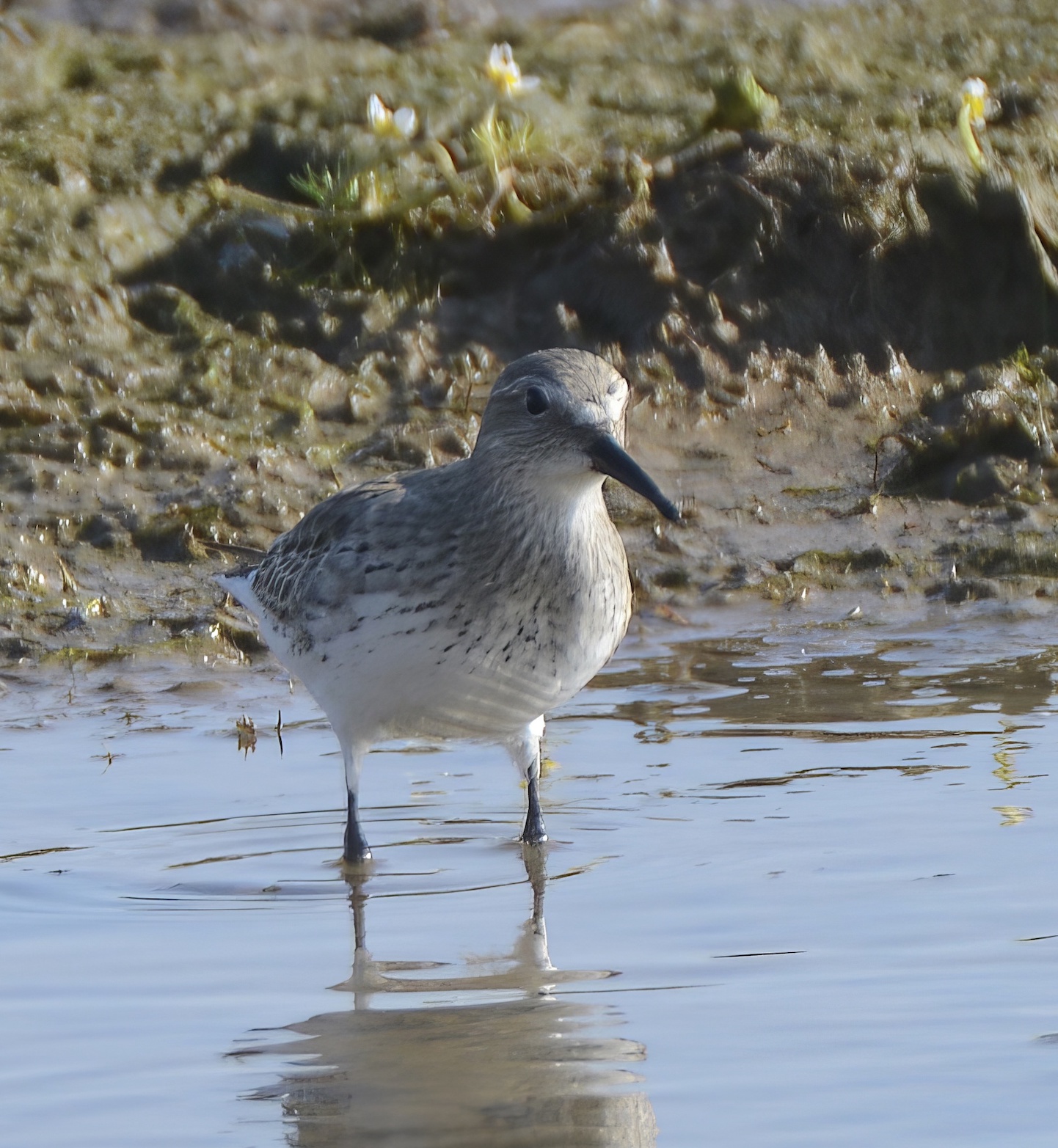
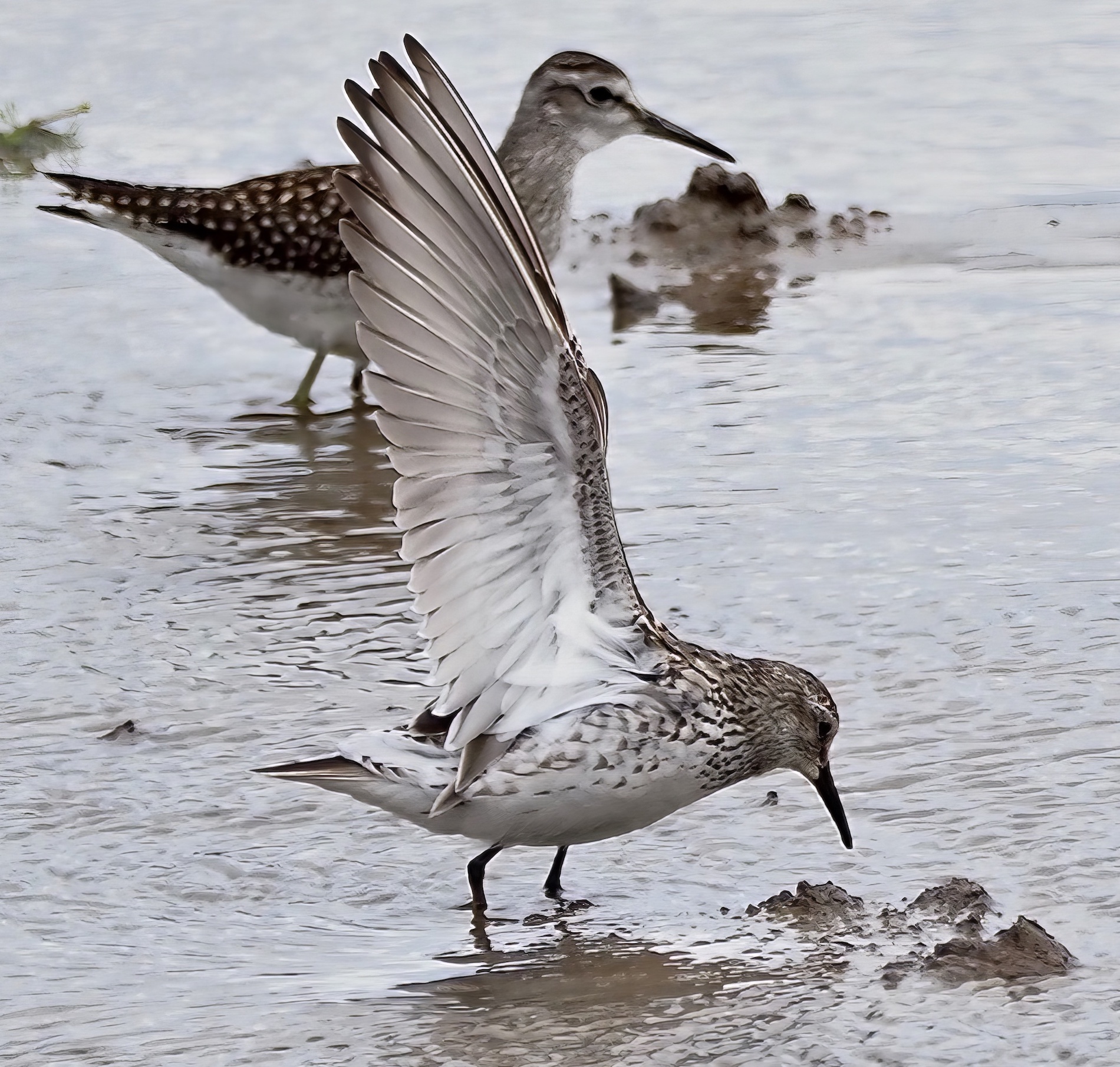
White-rumped Sandpipers: left, Gibraltar Point July 29th 2014 (Russell Hayes); centre, Frampton Marsh August 3rd 2014 (Steve Keightley);
right, Freiston Shore July 30th 2019 (Paul Sullivan).
With 33 county records up to 2019 this is the second commonest North American shorebird recorded in the county after Pectoral Sandpiper, C. melanotos. Inevitably the first five records came from Wisbech Sewage farm, the first in 1955 being trapped. The majority of those birds aged have been adults, 17 out of 20, and only three have been in spring, May 1999, 2006 and 2015. The autumn dates are widely spread between Jul 3rd and Nov 23rd. There have been some long staying individuals; the records of the wandering juvenile seen at several sites on The Wash in 2013 spanned 34 days, and 12 have stayed for at least seven days. A juvenile, first seen at Donna Nook on October 7th 2013, is thought to have been that which was at Gibraltar Point on the October 14th, then at Frampton Marsh intermittently during November 1st-9th, as well as returning briefly to Gibraltar Point on November 2nd. In 2014, an adult at Gibraltar Point on July 28th-30th is believed to have been the same as that at Frampton Marsh on August 2nd-4th. Another long staying adult was at Frampton Marsh July 28th-August 9th 2016, and another twelve individuals have remained for at least seven days.
The surge in records since 2006 has been due, in part, to the availability of suitable accessible habitat at places such as Alkborough Flats and Frampton Marsh. Almost half have been in The Wash between Gibraltar Point and Holbeach Marsh. The only inland record, apart from those at Wisbech Sewage Farm, was of one at Kirkby on Bain gravel pits on 14th July 2012. After five records at Wisbech sewage farm there have been three at Alkborough Flats, five at Gibraltar Point and seven at Frampton Marsh, plus 1-2 at seven other sites. Almost half have been in The Wash between Gibraltar Point and Holbeach Marsh. The only inland record, apart from those at Wisbech, was one at Kirkby on Bain GP on July 14th 2012.
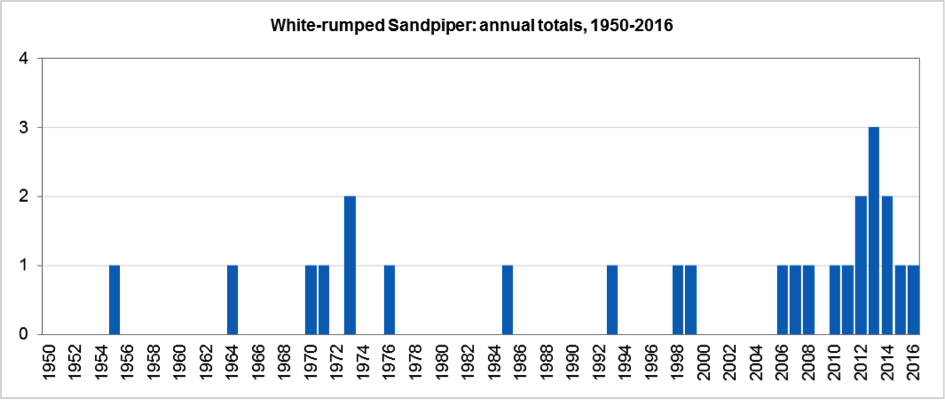
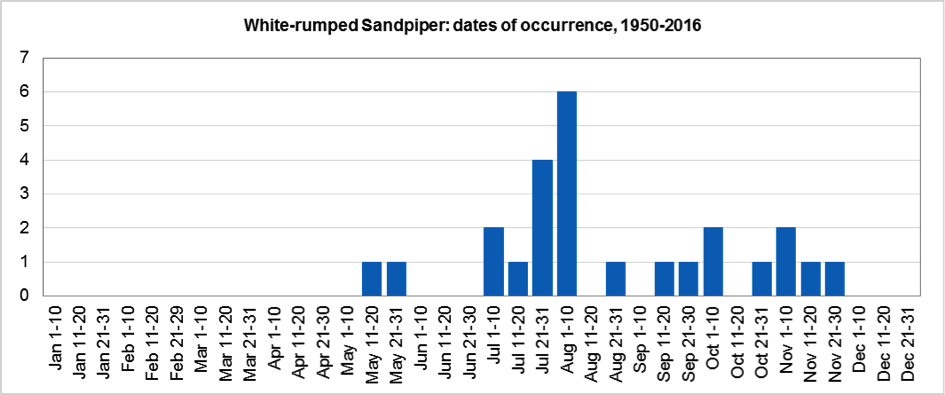
Finder’s report: White-rumped Sandpiper at Wisbech STW, November 13th, 1955, first county record.
by C. D. T. Minton.
Note: this account is © British Birds and appeared in volume 49 (4): 150. This was in the era before the national Rarities Committee was founded when rarity records were essentially presided over by the editors of that journal; grateful thanks to them for allowing the account to be reproduced here. There were three records in 1955, the other two being in Cornwall and Lothian; these were just the 3rd-6th British records since 1950 with another 16 in the preceding years to 1949 (pre-RC formation).
Circumstances
On November 13th, 1955, when trapping waders at Wisbech Sewage Farm (on the Lincolnshire/ Norfolk boundary) I caught a bird, together with four Dunlin (Calidris alpina), which was smaller than them and different in several features. This bird was examined in the hand and compared with the Dunlin by D. K. Ballance, Mrs. A. H. J. Knight, J. N. A. Larmuth, P. E. Naylor, and myself and was photographed by J. Cunningham. A photograph taken in the hand shows the short bill (24 mm) resembling a scaled-down Dunlin's (slightly downcurved near the tip and spatulated at the end and proportionately thinner), the lack of a white wing-bar on the primaries, an eye-stripe very broad behind the eye but narrower and rather indistinct in front, the white horseshoe-shaped uppertail coverts contrasting with a much darker tail than that of a Dunlin, and the long wings (124 mm.) projecting well beyond the tail—all characteristic of a White-rumped Sandpiper (C. fuscicollis). It was an adult bird and still had a few stint-like summer-plumage feathers on the back and scapulars. The breast markings ended in a distinct line—less so than in a Pectoral Sandpiper (C. melanotos) but more so than in a Dunlin. When released, and later when it was observed in the field down to ranges of two yards, it gave the diagnostic " jeet " note, repeated up to six times, on rising. It was present during the next four days, being seen by R. A. Richardson on the 17th, but it had gone by the 19th. During this time, it was watched by a number of people and the following is a summary of the interesting points noted by J. V. Boys, I. C. T. Nisbet, T. C. Smout and D. I. M. Wallace.
Description
Size between Dunlin and Little Stint (C. minuta). Flight very characteristic with long, thin, almost sickle-shaped wings beating through large arcs in a way reminiscent of a Little Ringed Plover's (Charadrius dubius) flight. The slight wing-bar was not very noticeable in flight, but the white upper tail-coverts were very conspicuous and made the tail appear almost black in comparison. Feeding habits were much more like those of a Little Stint (though less active) than those of a Dunlin, with beak held at forty-five degrees and food picked up, not probed for. It generally fed at the edge of the water and did not wade so deep as the Dunlin. Two observers noted a dark patch on the leading edge of the underwing showing in flight. On most days it called frequently in flight, the note being very like the squeak of a mouse (The Handbook) but not particularly reminiscent of a Meadow Pipit (Anthus pratensis) (Field Guide). It was usually seen in company with a few Dunlin—it was with eighty when caught—though when flushed it often broke away from the pack and was always the first to land again. It is interesting to note that a Pectoral Sandpiper had been present at the same place for ten days and was last seen the day before the White-rumped Sandpiper was caught.
Reference
Naylor, K.A. (2023) Historical Rare Birds <https://www.historicalrarebirds.info/>.
(Account prepared October 2017; updated with reference to the new Birds of Lincolnshire (2021) November 2022)

